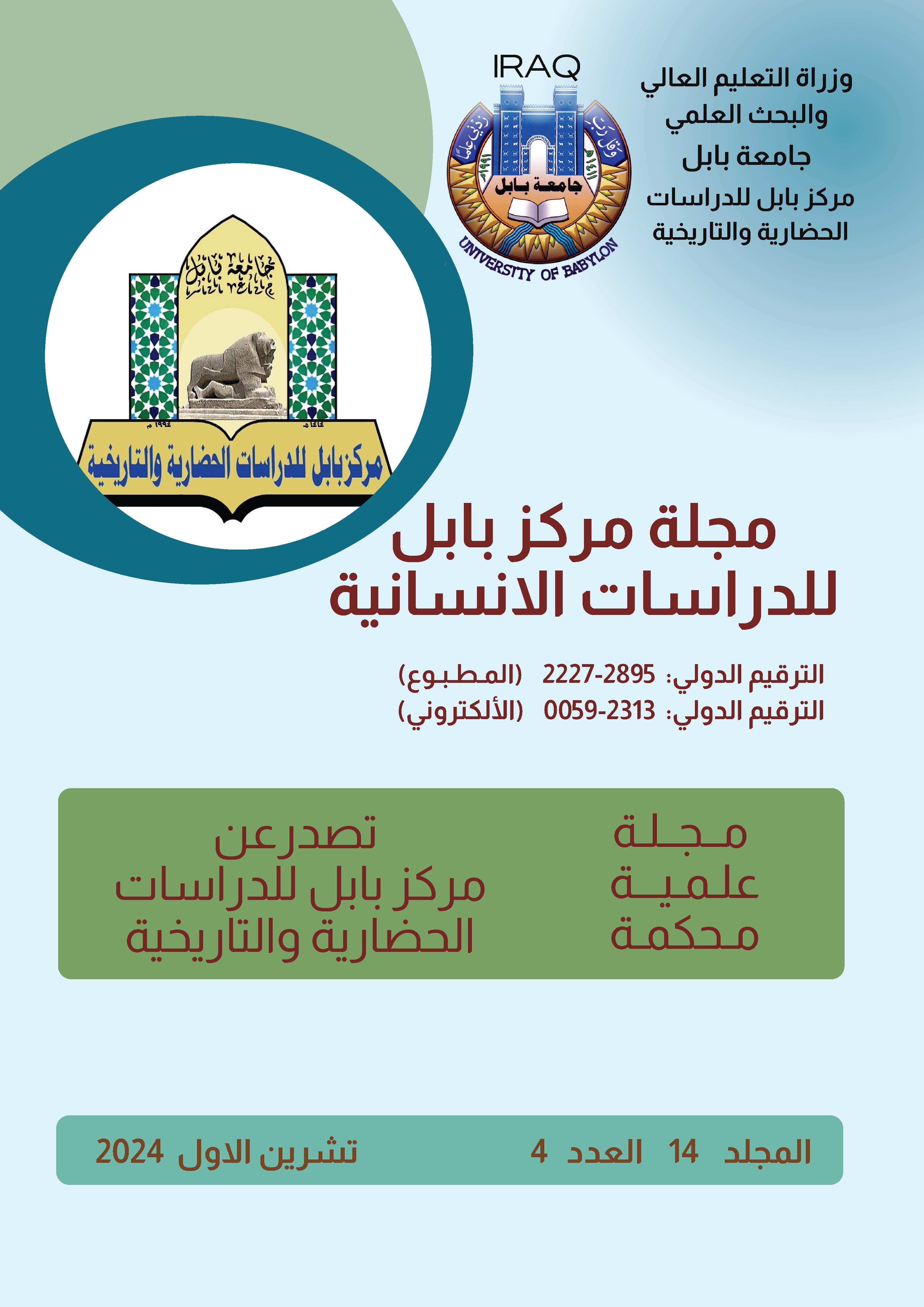Variation and the effectiveness of substitution (simile, metaphor, metonymy, metaphor)
Keywords:
Contrast, textual effectiveness, textual effect, semantic change, rhetorical change, and substitutionAbstract
The title of the research (Contrast and the effectiveness of substitution (simile, metaphor, metonymy, metaphor)) is one of the important topics that deals with the issue of (Contrast). We explained its importance in the rhetorical arts to arrive at the most prominent results: The term Contradiction was not specific to the ancients, so it was discussed in detail. It is a form of dissent and departure from the original, but the hadith scholars were more precise in defining the term. Dissimilarity is the departure in the Arabic language from its rules agreed upon by language scholars Its purpose is an attempt to draw the attention of the recipient and attract the recipient or reader. For a new, extremely important meaning.The artistic value of the metaphorical image does not lie in its similes and metaphors only, but in its formation and the difference in its elements between the sensual and the moral, as well as its suggestiveness, density and strangeness, in order to be able to transcend the traditional frameworks that limit creative work. The artistic value of the metaphor does not lie only in its similes and metaphors, but in its formation and the variation of its elements between the sensual and the moral, in addition to its suggestiveness, density and strangeness in order to be able to transcend the traditional frameworks that limit creative work. Contrast is considered as a term that can summarize rhetorical terms with narrow boundaries that may overlap with each other, and some of which may perform more than one art at the same time, as is the case with the purpose of simile, as it performs an illusory change through exaggeration, as it performs a polarizing change.







